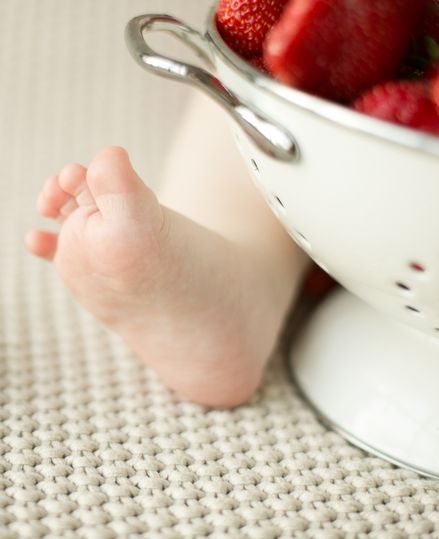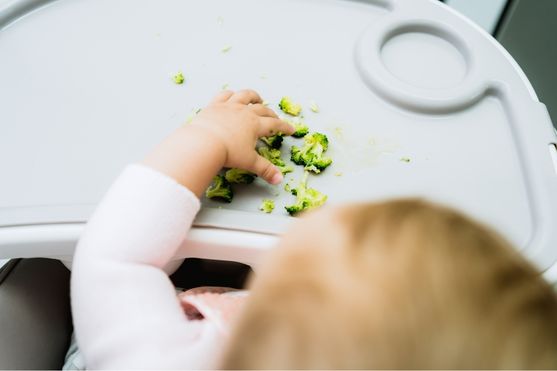Baby Weaning: Everything You Need to Know
Categories:
Child Development
 Choosing the right baby blanket dimensions according to season and age
Choosing the right baby blanket dimensions according to season and age
 How to attach a headboard (with or without drilling): quick and effective soluti
How to attach a headboard (with or without drilling): quick and effective soluti
 Waterproof sheet or mattress protector: the best solution by age group
Waterproof sheet or mattress protector: the best solution by age group
 27 Original, Useful, and Trendy Christmas Ideas for Teens 2025
27 Original, Useful, and Trendy Christmas Ideas for Teens 2025
 Christmas Activities for Baby: Creative Ideas for Home & Daycare
Christmas Activities for Baby: Creative Ideas for Home & Daycare
Regardless of the feeding method, whether breastfeeding or mixed feeding, food diversification is a crucial step for your baby's growth. As soon as your little one reaches 4 months, it is strongly recommended to diversify their diet.
This involves adding solid foods like vegetables, meat, starches... to milk to help development. The stakes at this stage are important. But what is food diversification? Follow the guide to understand more.


As your baby grows, their body demands different nutritional needs. Breast milk or infant formula alone is no longer sufficient at a certain age in the infant's diet. You need to feed your baby differently from their fourth month. This is food diversification, which involves introducing different foods.
Solid foods take center stage, gradually moving towards family-style eating. It's about changing from a single food to multiple ingredients with diverse tastes and textures. This can include vegetables, meat, fish, fruits, starches, cereals, etc. This stage contributes to the proper development of the infant.
The concepts of baby food diversification and recommended age have evolved over time. The key is to proceed gradually when introducing new foods. The little one still needs to learn how to digest new solid ingredients.
Given the importance of the process, it requires extensive knowledge of both child development conditions and dietary principles.
You may wonder at what age to start introducing new foods. Pediatricians and professional nutritionists recommend parents start offering their child food diversification between 4 and 6 months, preferably for healthy infants.
At this point, babies' digestive, renal, and gastrointestinal functions are very well suited to receive more solid foods. Children are also less susceptible to allergic reactions.
It is not recommended to diversify baby's diet before 4 full months, nor beyond 6 full months, as this may cause food allergies, especially in infants with allergic ancestry. Nevertheless, this stage will last until the age of 1 year, before infants can integrate into family meals.

It's not always easy to know which foods to introduce. There is no particular order to follow when introducing different ingredients between 4 and 6 months.
The essential is to incorporate fruits and vegetables, poultry, meat, fish, eggs, starches (rice, pasta...), legumes (beans, chickpeas, lentils...), and dairy products (yogurt, cheese...).
Foods can be introduced simultaneously and in small quantities, while varying the small meals each day. It is strongly recommended to immediately give allergenic ingredients, whether your baby has a family history of allergies or not, to better develop food tolerance.


Flours and cereals are good for starting diversification. Prefer gluten-free products. One to two teaspoons are sufficient for each portion. Most children prefer sweet tastes and reject vegetables. However, the latter are recommended occasionally at lunchtime. This can be homemade cooked vegetable purée or from a jar.
Among the most popular vegetables, we can mention potatoes, carrots, tomatoes, zucchini, broccoli, spinach, green beans, sweet potatoes, broccoli, white leeks, artichokes, peas, etc.
For baby food jars, "single-flavor" options are preferred. Don't hesitate to introduce a new food at least every three days. Ideally, the baby should gradually discover the taste of each vegetable. If they reject it, simply offer another one. However, avoid forcing their appetite.
For fruits, small jars and sugar-free compotes are suitable at first. Regardless, opt for well-cooked items. Fruit juices are not beneficial for little ones.
BLW which stands for "Baby-Led Weaning" is a method that, unlike traditional food diversification, encourages parents to let their child experiment with their own way of eating.
In BLW, babies are offered solid foods directly instead of purées. Besides being practical, BLW allows your child to:
to better manage their motor skills and be more autonomous,
to discover foods through touch and stimulate all their senses.
Before starting BLW, certain factors need to be considered:
Your child must be at least 6 months old to practice BLW. Indeed, they must be able to properly grasp food with their hands and sit unassisted. Additionally, WHO recommends introducing chunky foods from 6 months.
BLW allows your child to discover food independently. The time spent at the table, the frustrations your child may encounter, and the inevitable mess will require more time and energy from you.
Choosing BLW has several advantages for children but it's not suitable for all children and parents. Before starting, talk to your pediatrician who can best advise you.

This article might also interest you: How to dress baby at night?
